A Virtual Tour of NCPR
Have you seen NCPR? Have you been to the station’s studios in Canton?
The area we cover is so vast, it’s likely most people haven’t visited. And it certainly isn’t crucial. It’s the people—not the office space—that make the station what it is. Still, people like to get a sense of where all that radio stuff happens.
On a recent, quiet Saturday morning, I took my camera around the station and got these pictures, hoping to give everybody a glimpse of this place.
Starting when you walk in the door, our “lobby” has a few signs and pictures from artists across the North Country, including this hand-hewn and beautifully finished plank, made and donated by Tim Brookes:
June Peoples, our membership director, sits in the first office you come to. There’s always candy on the filing cabinet and people wandering in wanting to see the latest goodies on offer to listeners. So, it makes sense that she’d have shelves lined with NCPR mugs, past and present (this is only part of one shelf):
While taking these pictures, I noticed how many people at NCPR have antique pieces of technology. Maybe it’s Radio Bob’s influence?
Walk down the hall and you’ll come to Ellen Rocco’s office. Her door is always an eclectic mix of stuff and it’s always changing.
Listener letters and bumper stickers (“You’re Damn Right I Got the Blues!”) share space with maps, poetry and something to think about (at bottom left, that’s a poster for a long-ago Muddy Waters’ concert in Canton):
Program director Jackie Sauter is right next door, in one of the more colorful spaces at the station. And, yes, this is Music For A Monday, but it’s only part of the stacks of CDs and records she pulls from every week for her show:
Across the hall, Dale Hobson sits with a furrowed brow as he stares at two monitors showing the life and times of this web site. The hi-tech gear sitting on his glass desk is in sharp contrast to the antiquery on the shelves above:
Outside his door is an old map of northern New York and Vermont. Years ago, Radio Bob started putting the push pins in to mark every spot where his car broke down on the way to fix a transmitter.
No, that’s not true. Actually, each pin represents where people can hear NCPR’s signal. Each color represents a different frequency:
Then, at the end of the hall, is Bob’s office. It’s a kind of way station for all kinds of tech gear—transmitters, receivers, laptops, flux capacitors, etc—needing repair. It’s rare to find something new, out-of-the-box here. Bob prefers fixing stuff to buying it.
This, I think, is Bob’s attempt to keep a signal operating or lightly toast a clam and bacon bagel. In New Zealand:
 And across the hall from Bob’s office is the kitchen. You might think the compost bucket was Ellen’s idea (because wherever our fearless farming leader goes, she’s bound to expound on the benefits of compost) but it’s actually new, proposed by a news intern:
And across the hall from Bob’s office is the kitchen. You might think the compost bucket was Ellen’s idea (because wherever our fearless farming leader goes, she’s bound to expound on the benefits of compost) but it’s actually new, proposed by a news intern:
Going back down the hall and through the lobby, you walk into the news wing. Edward R. Murrow Awards for exceptional news stories and news casts line the wall:
There are lots of awards—including these from Public Radio News Directors, Incorporated, hanging on the other side of Martha Foley’s doorway. (Peering in, you can see where NCPR’s news director conducts phone interviews and works on stories):
Next door is Barb Heller’s office, where you’re just as likely to hear someone playing guitar as telling stories—or both at the same time:
David Sommerstein’s space is two doors away. As assistant news director, reporter and host of the Beat Authority (currently leading all NCPR shows in the amount of Spanish spoken on air), David has distilled some of that in this sign on his office wall:
Then, we come to Todd Moe’s office. It’s his voice that most NCPR listeners hear—at least those that wake up and listen to the station on weekday mornings. His office is packed with finds: notes, comics, poetry and posters—and hats:
And wouldn’t it be great if Moe (the band) and Moe (the bartender on the Simpsons) had a picture of Todd on their office doors?
After finishing his morning shift on air (and sometimes during that shift), Todd catches up with lots of people, and interviews them, by phone—this phone—connected to this microphone, little mixing board and his computer (you’ll have to ask him how he uses the cassette deck):
When it’s time to go on air, Todd goes into the control room. This is also where music-show hosts and announcers sit when we talk to you (regular listeners already know the sign on the door has varying levels of efficacy, depending on the host):
And once we’re in the host chair, there’s a lot to look at: two computer monitors, one on either side of the control board, the underwriter credits we read, the station ID and a whole bunch of reminders—including this one to not drop the “F” bomb:
(By the way, that read out behind the “F” bomb is the NCPR weather info panel. It’s connected to a wet-bulb sensor just outside the control-room window. So, when we say, “Here in Canton it’s ___ degrees,” the part of Canton we’re referring to is about five feet away).
That wraps up this virtual tour of the station. Hope you enjoyed it, though—really—a public radio station is much more about people than the space we work in. If you want to see what we look like, click here.






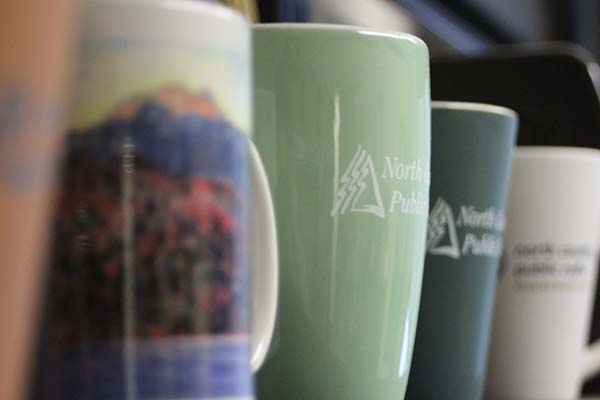


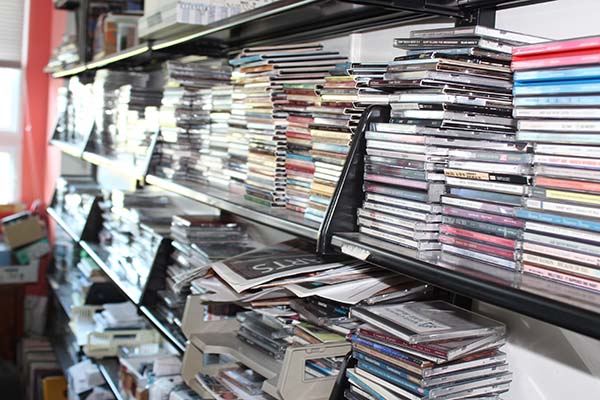
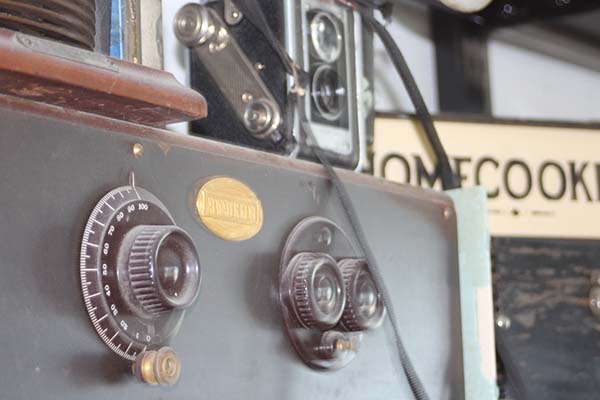








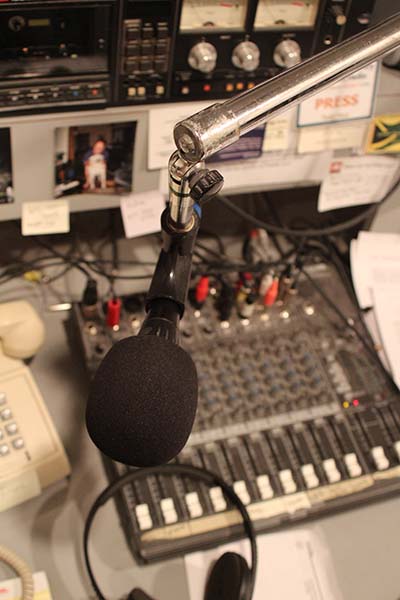
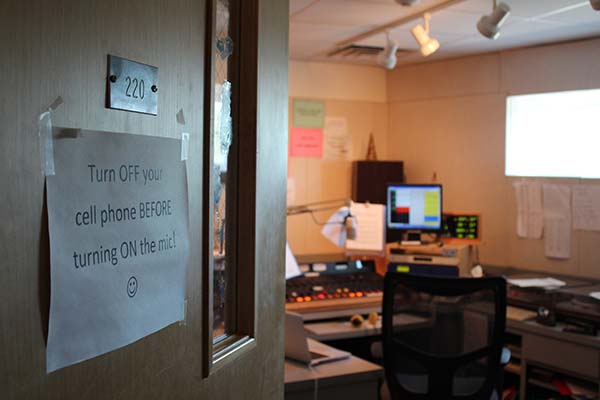
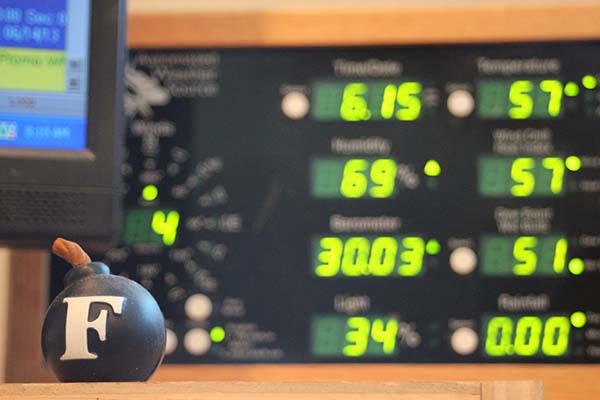



Thanks for the tour, Jonathan.
Yes, thanks for the tour, Jonathan. Nice photos. How about some shots of some of your transmitter locations?
Hey Bob, How about a view from the top of each tower.
Great job, Jonathan. I’m so glad you got Bob’s flux capacitor in.
Thanks, Martha. Just be careful if Bob shows up one day in a DeLorean.
I’m still agape at those crystal sockets on a metronome, the likes of which I’ve never seen. Plug in a different crystal to change the tempo? :–)